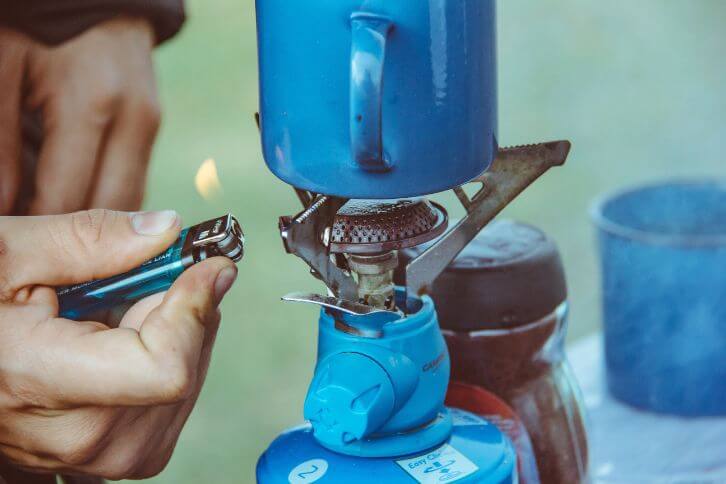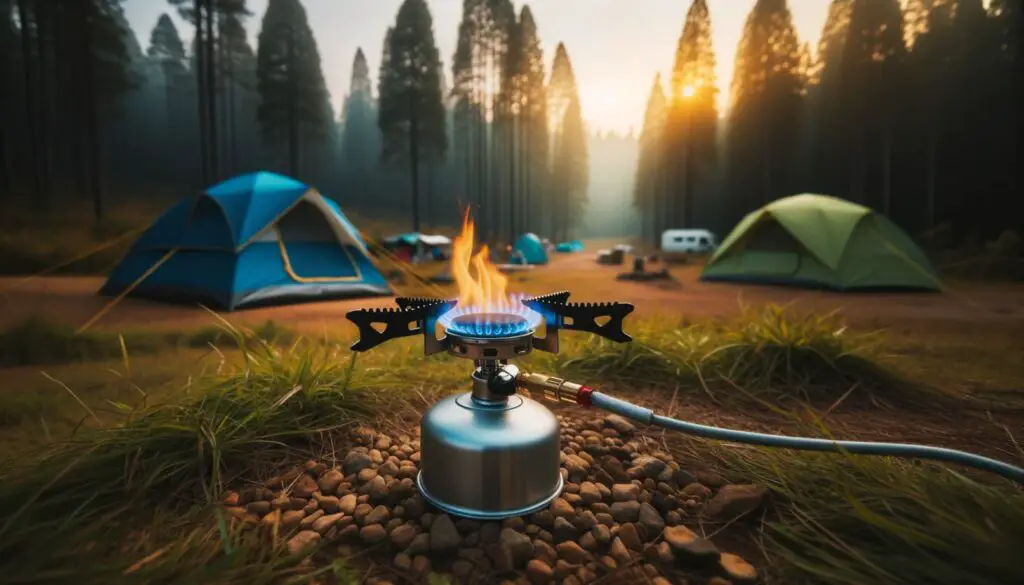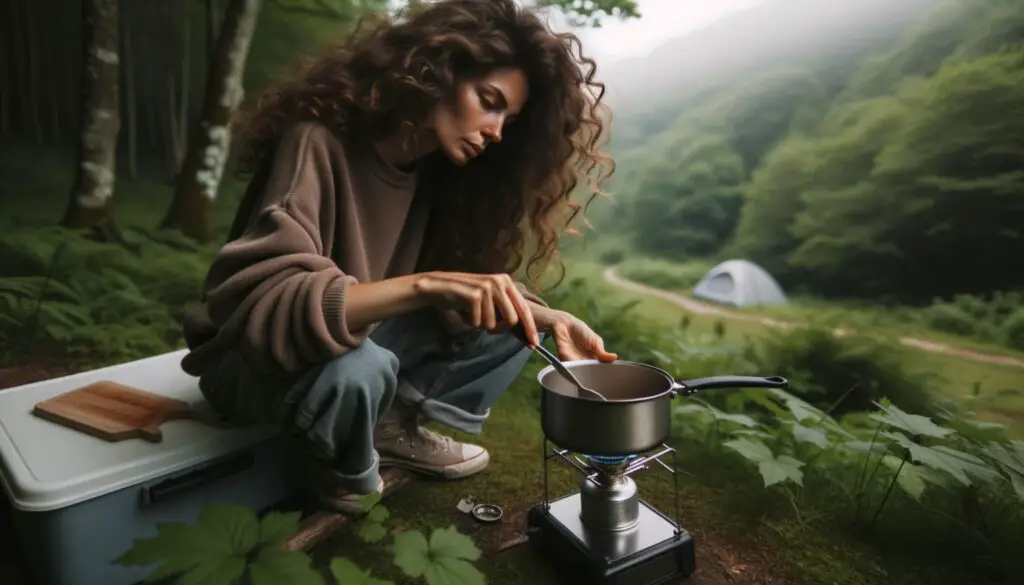When planning a camping vacation, one of the most important considerations are food preparation, and also how much gas will be required to cook your meals. So, it is important to know how long your gas canister will last so you can plan your expeditions accordingly.
While the subject is enormous, this article will help you determine how long your gas should last and how much gas to pack for your next camping trip.
Here’s how long a gas canister last
Typically, camping gas burns at an average rate of about 2g of gas each minute. This means that a basic 220g aerosol gas canister should last approximately two hours in ideal conditions, whereas a conventional 450g aerosol gas cartridge should last approximately 3.5 hours.
- Here’s how long a gas canister last
- How long can a gas canister last calculation
- How long does 100g of isobutane last?
- How long does a 220g gas canister last?
- How long does 230g butane canister last?
- How long does a C500 gas canister last?
- Types of gas canisters
- How much gas canister do you need camping/hiking/backpacking
- Bottom Line

How long can a gas canister last calculation
A typical gas burner consumes approximately 5 ounces of gas each hour. This can be used to determine the exact duration of a certain canister; for example, a 500g canister will typically last less than three hours on a single charge.
To determine this, it is essential to work through several extremely simple equations. To begin, every 1000 grams of gas contained within the cylinder (propane or butane) generates 14 kilowatts (kW) of heat energy.
Multiply the cylinder size (in kilograms) by 14 to determine the amount of thermal energy contained in the cylinder.
As a result, the following is the amount of energy contained in a 529oz Butane cylinder:
210 kilowatts = 15 x 14
To obtain your answer, divide this figure by the heat setting of the device you are using. When set to its maximum setting, a typical cabinet heater generates 4.2Kw/hour. As a consequence, 210 kilowatts/4.2 kilowatt-hours equals 50 hours of heat (on maximum setting).
Simply by using 1 bar of pressure rather than 3 bars (as you would on the maximum heat setting), you can extend the life of your cylinder by 150 hours.
Additionally, the following should be factored into your fuel formula:
The population: To calculate the fuel consumption, it is necessary to determine the number of passengers and the number of hot meals and beverages required.
Seasons, height, and wind all have a significant impact on a stove’s overall fuel consumption.
Water Availability: Water from glacial streams and ponds will also increase the time required to reach boiling point, so bear this in mind.
Cooking Style: Simple boil-only meals will consume significantly less fuel than a multi-step gourmet meal. As a result, keep this in mind while organizing your food schedule before the trip.
Now that you have a rough grasp of your area, its conditions, and group requirements, assess your stove’s efficiency. The efficiency of a stove has a direct effect on the amount of fuel required.
TIP: You can also save fuel by using a heat exchanger.
See related: Duraflame Fire Pit vs Solo Stove Bonfire

How long does 100g of isobutane last?
With regards to the MSR IsoPro, the 100g canister will last between 1 and 1½ hours, depending on the food and surroundings.
Gas canisters are an excellent method to ensure that you have enough gas for your next camping or hiking trip. They intended gas canisters to last as long as possible, but can you realistically expect to use this much throughout your trip.
How long does a 220g gas canister last?
If you use a camping stove properly, a butane canister will last approximately 3 to 4 hours on low heat, while a butane gas canister will last approximately 2 to 3 hours on high heat.
This allows you to utilize all of your cooking abilities. By now you have an idea of how long a butane fuel canister will last.
How long does 230g butane canister last?
It will last approximately 2 to 3 hours under optimum conditions, similar to a regular 220g gas canister.
The elevation at which you camp, the temperature of your surroundings and your gas, the stove you use, and how efficiently you use your gas all affect how long your camping gas lasts.
Gas canisters are available in two different sizes: standard and big. The large canisters are recommended for use with gas stoves, while the normal canisters are recommended for use with liquid fuel stoves.
How long does a C500 gas canister last?
With a 500g canister, a full canister should last approximately 6.5 hours.
Not only should you look for reliable gas canisters, but you should also evaluate the gas’s quality. If you purchase inexpensive gas, you may anticipate that your canister will last less time and that you will have to replenish it more frequently.
Gas canisters are one of those items that significantly simplify camping. Without having to worry about a propane tank running out of fuel, you can fill up, light a stove or lantern, and begin the food cooking. However, they can be costly, so you want to ensure that you choose a high-quality product.

Types of gas canisters
Screw-On Canisters
By far the most frequently used form of butane gas canister for camping. Additionally, it is resealable thanks to the ‘Lindal valve. If you’re pressed for time, simply disregard the others and choose these.
Canisters Easy-Click
Also known as non-threaded, clip-on, and Easy-Click plus canisters. It is identical to a screw-on canister except that the valve does not have a thread.
Pierce-able
This sort of butane gas canister is inexpensive, but once punctured, it cannot be resealed. Though it is seldom the first choice, it is the only option in some locations.
Aerosol
Another inexpensive method, but usually only suitable for refilling other screw-on canisters with an adaptor.
4oz Steel Canisters
These canisters are a little heavy to carry about in a backpack, but they might be useful for car camping or basecamp camping.
How much gas canister do you need camping/hiking/backpacking
A tiny 100g canister of stove fuel is frequently sufficient for a solo weekend hiking excursion. As a general rule, bring enough fuel to boil one liter of water per person, per meal, taking into account the boil time and overall burn time of your stove.
To determine the amount of fuel you’ll require on your backpacking trip, follow these general guidelines, which we’ll outline below. It’s worth noting that you can adjust the processes for a liquid fuel stove as well:
Plan your meals
The objective is to determine how much water to boil and how long food should cook on the stove.
Determine your fuel requirements per your plan
This is when the arithmetic comes into play, based on the specifications for the boil and burn times on your stove.
Adjust for the following elements that will affect your fuel consumption
No plan is flawless, especially if you’re going to be camping in the wind or at a high height.
After calculating the amount of water to boil, check your stove’s specs. You must examine the following facts:
Boil Time informs you how long it takes a stove to boil a liter of water in ideal conditions.
In this case, 60 min. per 230g canister. (Some manufacturers specify canister size in oz., so you may need to convert.)
Another way to obtain stove specs: If you doubt the manufacturer’s performance specs or simply can’t locate them, you may run your test at home to find out how much fuel your stove needs to boil a liter of water and how long it will burn on that fuel.
Some stove specs use ounces, while others use grams, so you may need to convert units along the route.
See related: Best Pressure Cooker For Camping & Alcohol Stove vs Jetboil – Pros & Cons
Calculating
- To find out how much water to boil, multiply the amount by your stove’s boil time. This will tell you how long it will take to boil all of your meals’ water.
2.5 liters total water + 3 minutes 30 seconds boil time = 8 minutes 45 seconds (boil time for your trip)
- Determine the percentage of total burn time required to boil that volume of water. Divide your trip’s boil time by your stove’s burn time.
Example: 8:45 (trip boil time) / 60 (total burn time) =.15 (or 15 percent)
- Calculate how much fuel you’ll need to boil the complete amount of water using the %. In this case, multiply 15% by the amount of fuel stated in your stove’s burn time.
15% x 230g (total fuel) = 35 grams
This stove will take roughly 35 grams of fuel to boil 2.5 liters of water for your weekend excursion. Just about a third of the most common smaller canisters on the market (100g, for canister stoves only). That gives you plenty of room to account for other issues.
Calculating the life of a gas canister or cartridge is not an exact science. Consider the height, the temperature of your surroundings and your gas, the type of stove you use, and your camping gas efficiency.
Bottom Line
We are all aware of butane’s popularity as a camp and home fuel. Butane is the most environmentally friendly and safest fuel to carry to camp.
The majority of people say it is a waste of money, but it is not, because only one cylinder must be used at a time. Butane gasoline can be kept indefinitely without deteriorating. Finally, always purchase a high-quality gas canister.
Gas containers that are more expensive last longer, which saves you money. You do, however, get what you pay for. Generic or less expensive gas containers are still available, but they will not last as long. This is a trade-off worth considering when selecting butane gas.
